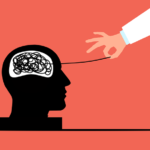Life is full of patterns, whether we recognize them or not. Some bring stability, while others unravel into disorder. A chaotic system is one where unpredictability, inconsistency, and instability reign. These systems do not function with clarity, and as a result, they create outcomes that mirror their dysfunction. In people, relationships, and careers, chaos does not remain contained. It spills over, disrupts, and confuses, making it impossible to build anything lasting or secure. If a system is chaotic at its core, then the results it produces will always reflect that nature.
What Is a Chaotic System?
A chaotic system is one that lacks order, consistency, or direction. It is governed by impulse rather than wisdom, reaction rather than reflection. In relationships, a chaotic system looks like cycles of misunderstanding, emotional volatility, and repeated conflicts with no resolution. In careers, it manifests as constantly shifting expectations, toxic work environments, and unclear goals. In individuals, it appears as self-sabotage, impulsivity, or an inability to commit to a path of growth.
These systems often feel like they are on the verge of collapse, yet they continue, fueled by dysfunction and habit. They are exhausting, draining, and unstable, yet those caught within them often struggle to see a way out.
How to Identify a Chaotic System
Recognizing a chaotic system requires paying attention to patterns rather than isolated events. A single conflict does not mean a relationship is chaotic. A bad day at work does not mean a career is unstable. But when disorder is the norm rather than the exception, chaos is at play.
A chaotic system will always feel unpredictable. The emotional climate shifts constantly, leaving you unsure of what will happen next. It breeds anxiety and hypervigilance, making you feel like you have to walk on eggshells or always be prepared for the next crisis. It lacks accountability—problems repeat themselves because they are never truly addressed. And worst of all, it feels endless. No matter how much effort is poured into fixing things, nothing ever fundamentally changes.
What Chaotic Results Look Like
When the foundation is unstable, everything built upon it is fragile. Chaotic results are the natural byproducts of disorder. In relationships, this means recurring breakups, mistrust, and emotional exhaustion. In careers, it leads to burnout, lack of fulfillment, or the feeling of being stuck in an endless cycle of stress. In personal life, it shows up as frustration, self-doubt, and a sense of constantly running but never arriving.
Chaotic systems do not create growth. They create loops—patterns that repeat with slight variations but always lead back to the same point. You may feel like you are making progress, only to find yourself back where you started, dealing with the same issues that never truly resolve.
The Role of Chaotic People
Chaotic systems do not exist in isolation. They are often driven by chaotic people—those who, whether intentionally or not, fuel disorder rather than stability. These individuals struggle with consistency, accountability, and emotional regulation. They thrive in an environment where there is always something to fix, something to be upset about, or something to control.
Chaotic people create instability in relationships by reacting emotionally rather than responding thoughtfully. They shift blame, rewrite history, and refuse to acknowledge patterns that would force them to change. In workplaces, they contribute to confusion by spreading misinformation, creating unnecessary drama, or avoiding responsibility. In personal life, they cycle through self-destructive behaviors, always seeking temporary relief rather than lasting transformation.
This does not always mean chaotic people are malicious. Many are simply operating from their own wounds, shaped by past experiences that have taught them that chaos is normal—even necessary. They are not comfortable in stillness, so they create disruption. They are not used to peace, so they provoke conflict.
How to Deal With a Chaotic System
Escaping chaos requires two things: clarity and boundaries. Clarity means seeing the system for what it is rather than what you hope it could be. It requires stepping back, recognizing the patterns, and accepting that no amount of effort will turn a dysfunctional system into a functional one unless its core nature changes.
Boundaries, then, are the response to clarity. When a system is chaotic, you must decide whether to engage with it or remove yourself from it. Some situations can be changed—relationships where both parties are willing to grow, careers where leadership is open to transformation. But others cannot. If a system thrives on chaos and refuses to change, the healthiest option is often to step away.
Healing from the effects of a chaotic system means finding stability. It means surrounding yourself with environments that foster peace rather than stress, with people who bring consistency rather than confusion. It requires rewiring the belief that chaos is normal or inevitable. Stability is not boring. It is the foundation upon which real growth and deep relationships are built.
The Truth About Chaos
Many people believe they can control chaos, that if they try hard enough, they can make a dysfunctional system function. But chaos is not tamed by effort—it is only transformed by intentional change or avoided altogether. The longer you stay in a chaotic system, the more it shapes you, making chaos feel like home even when it is harming you.
The truth is that you do not have to live in disorder. You do not have to remain in cycles that deplete you. Clarity, boundaries, and stability are not luxuries; they are necessities for a life of peace. And peace is not something you find in chaos—it is something you create by stepping out of it.













